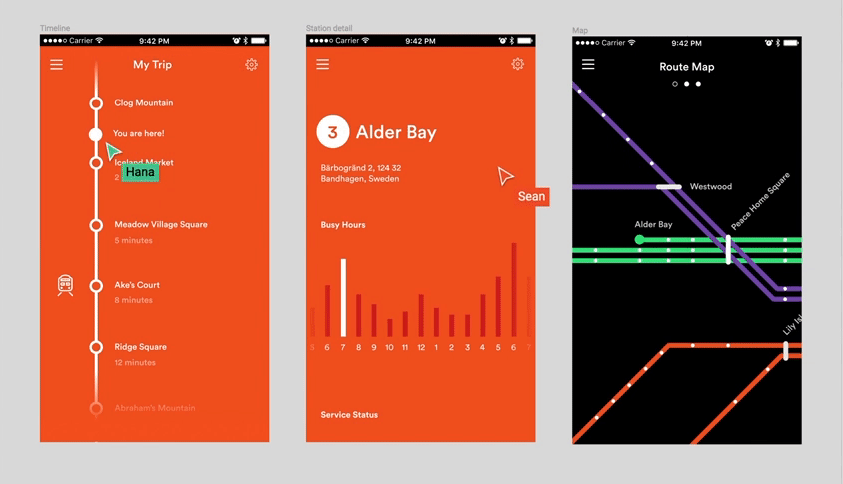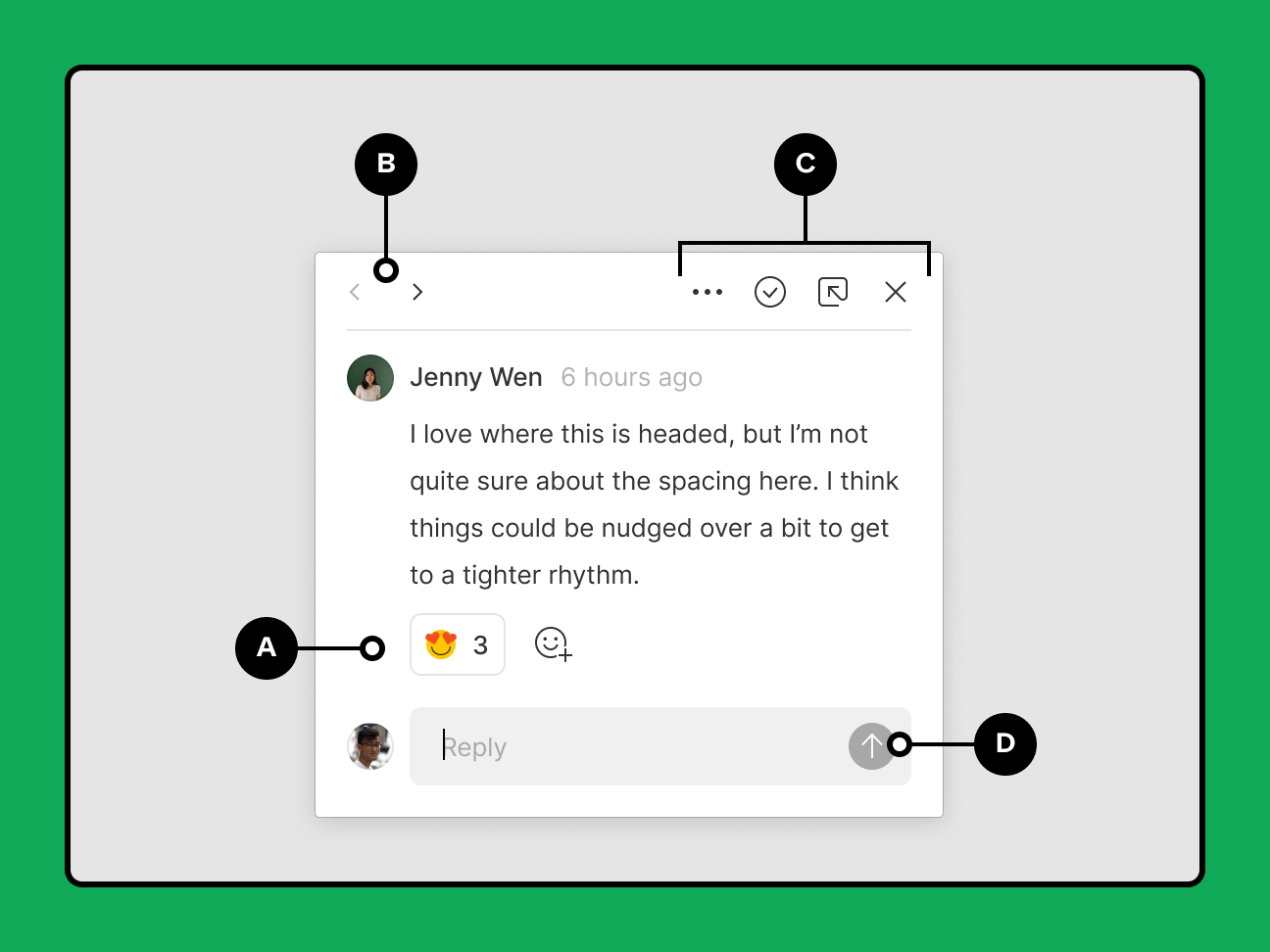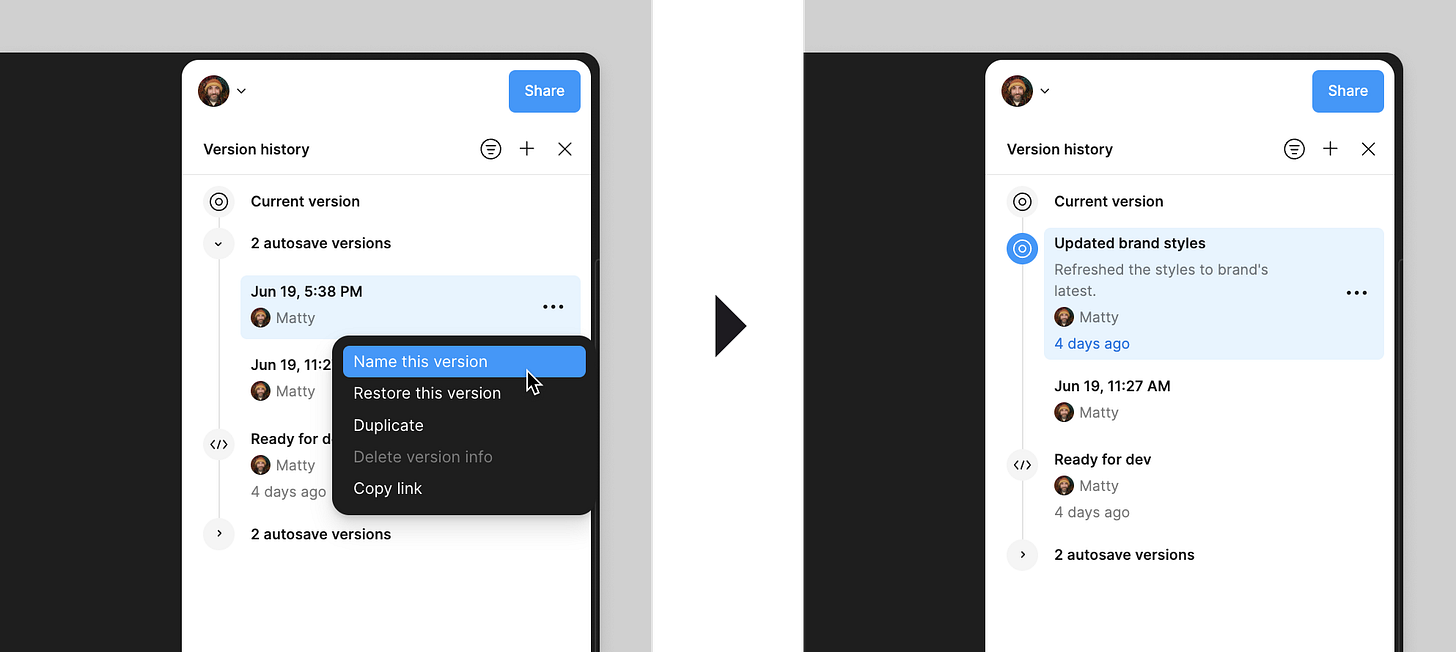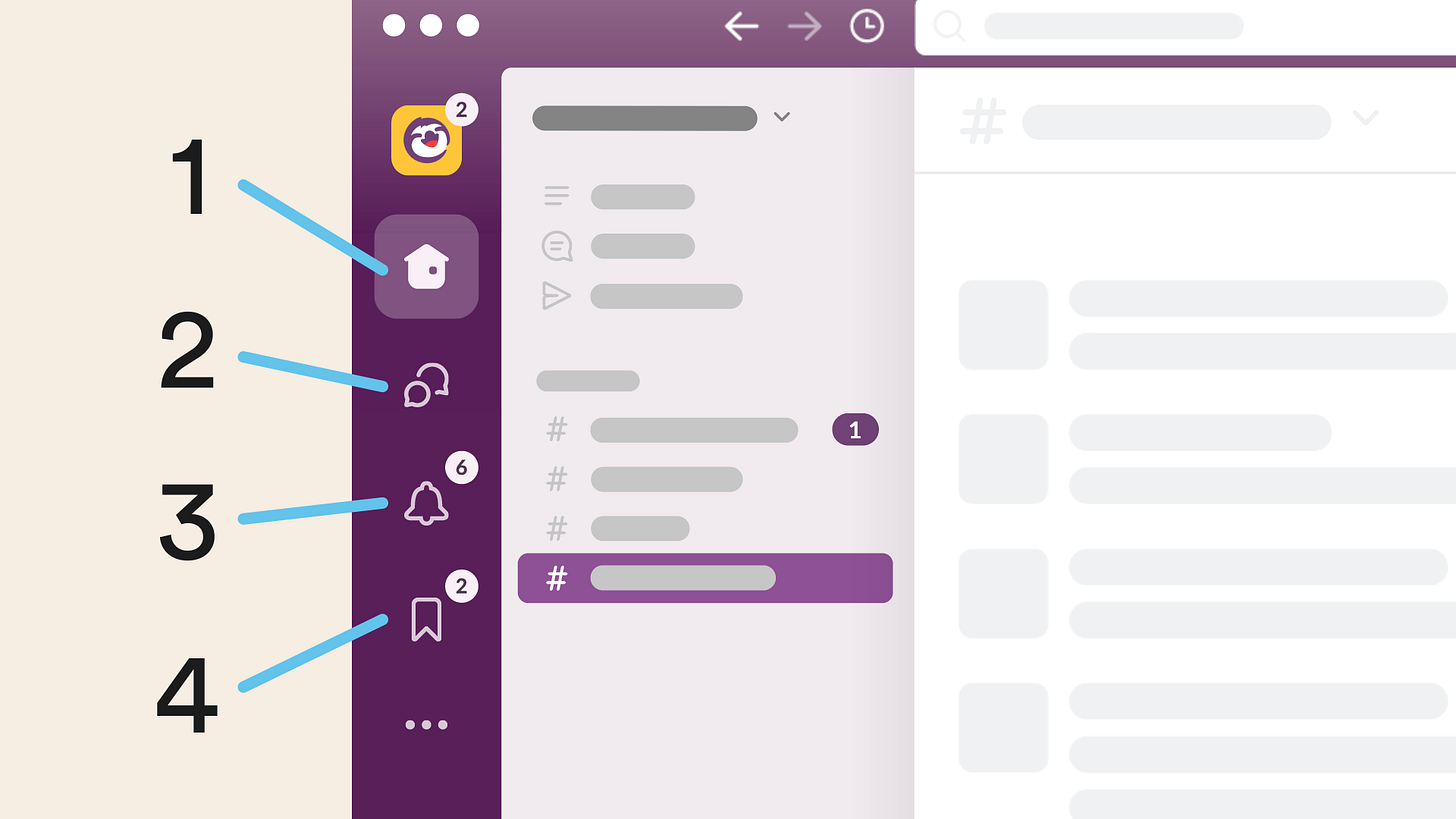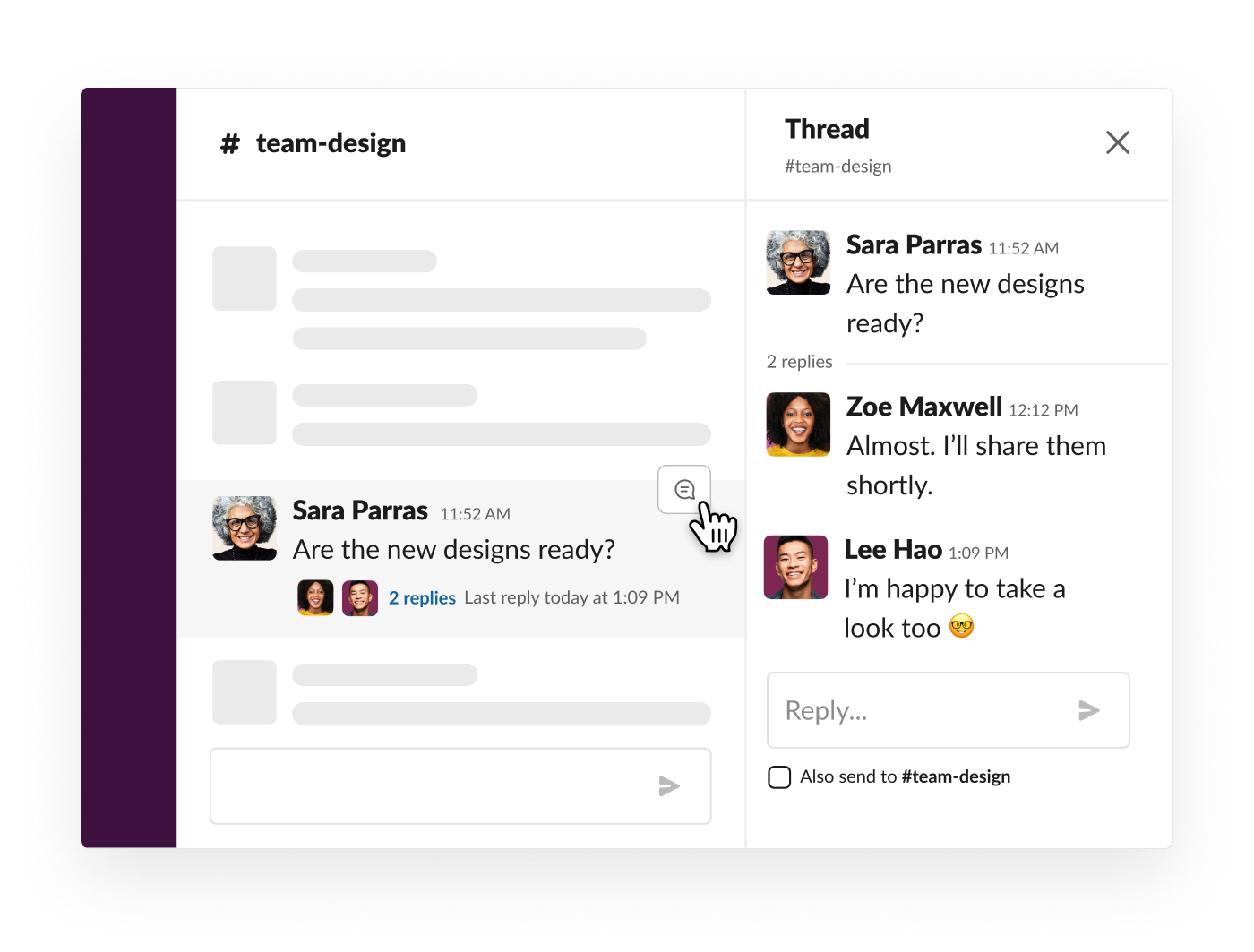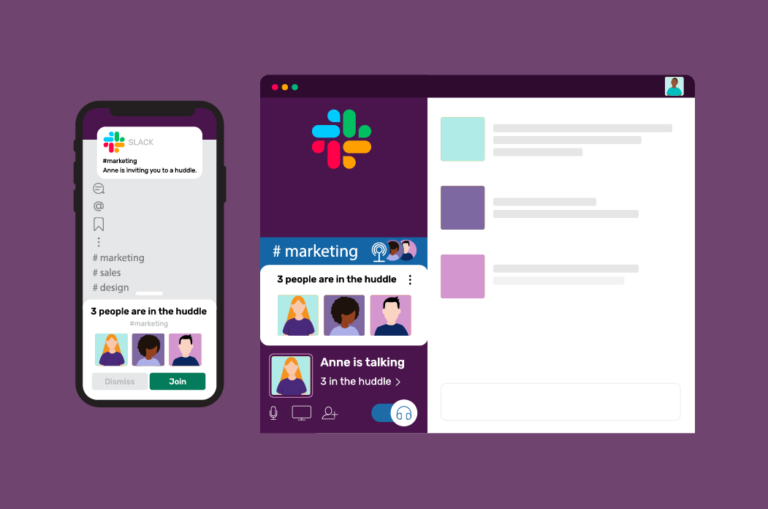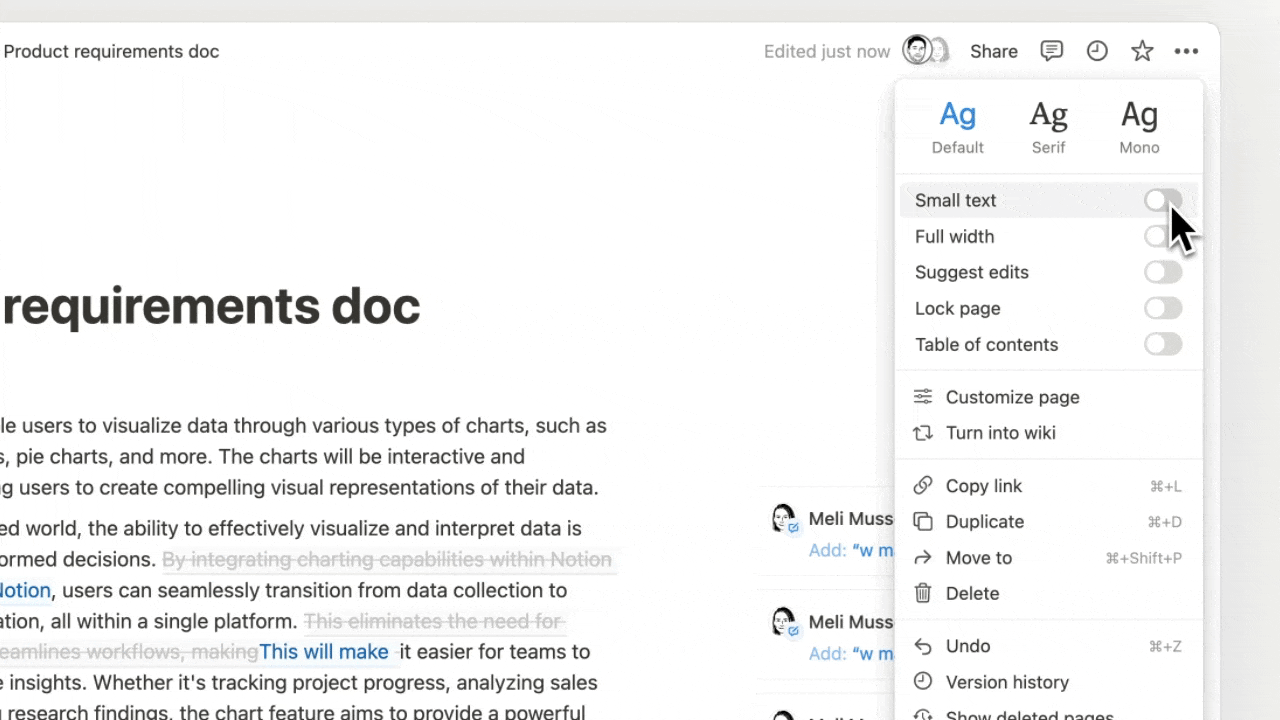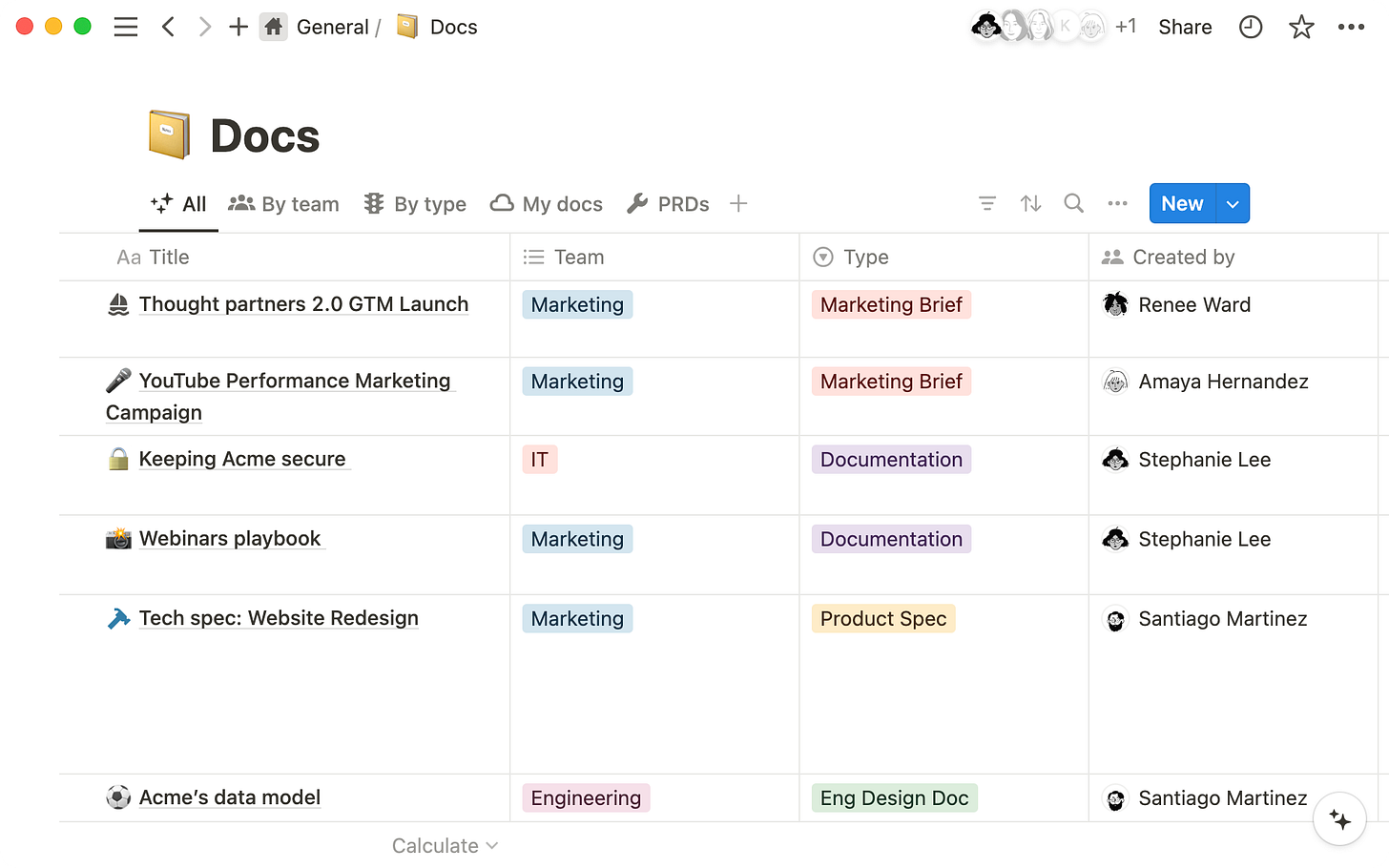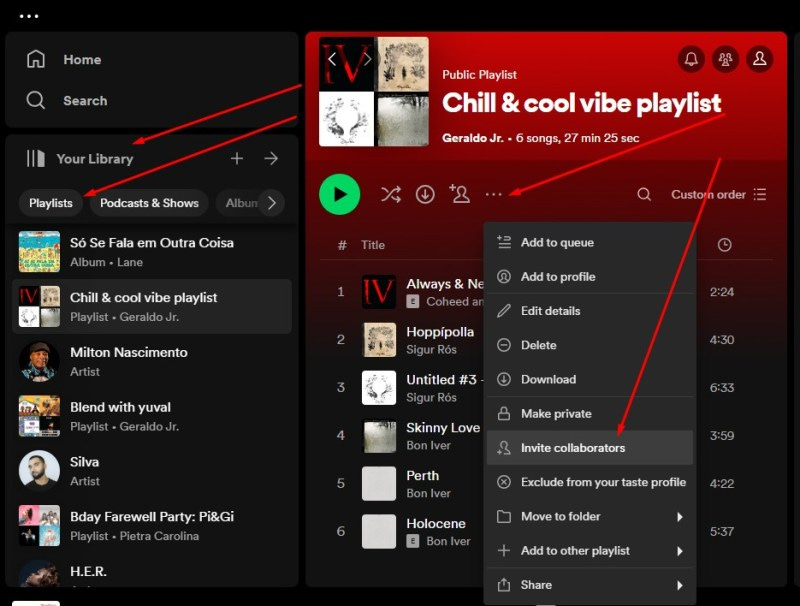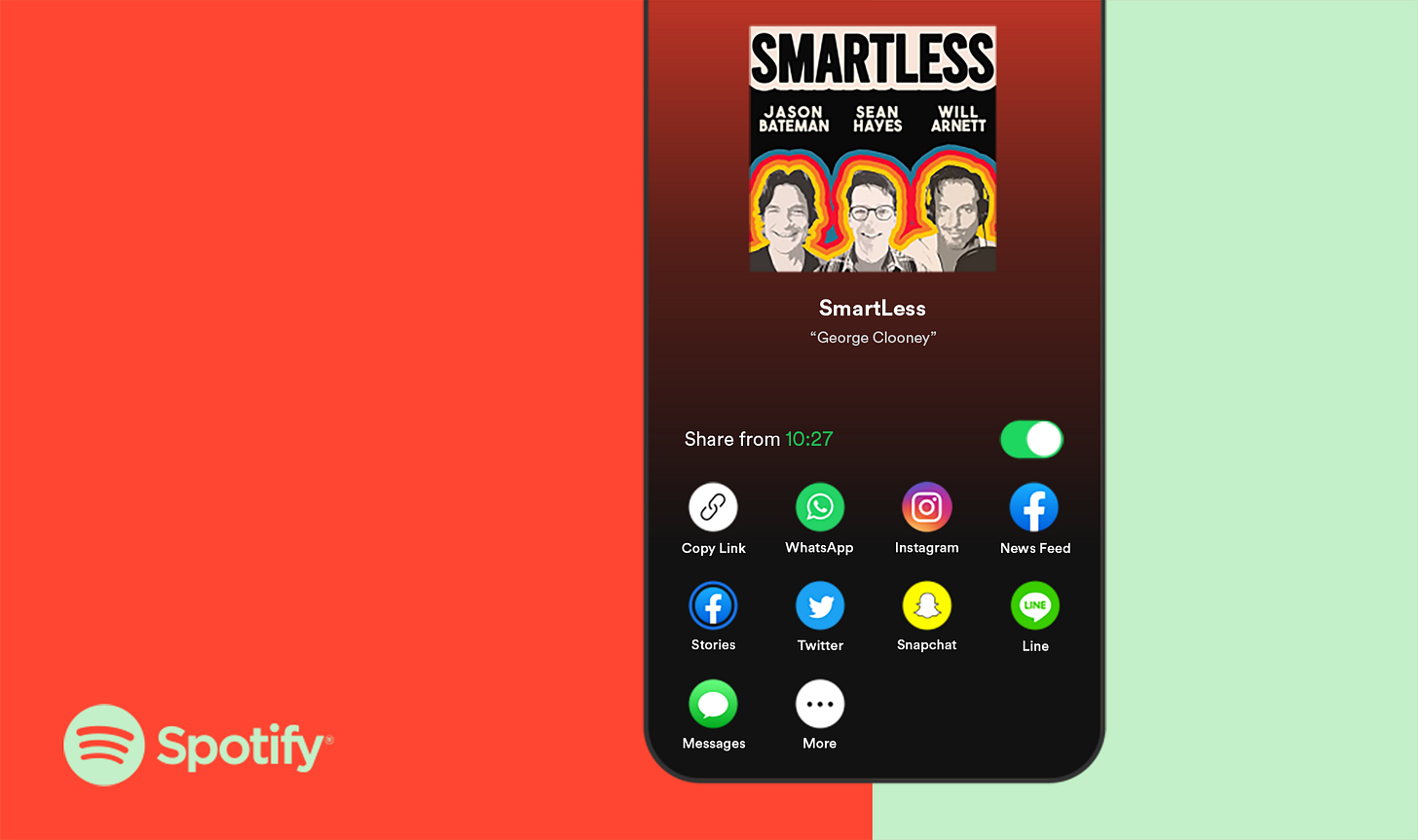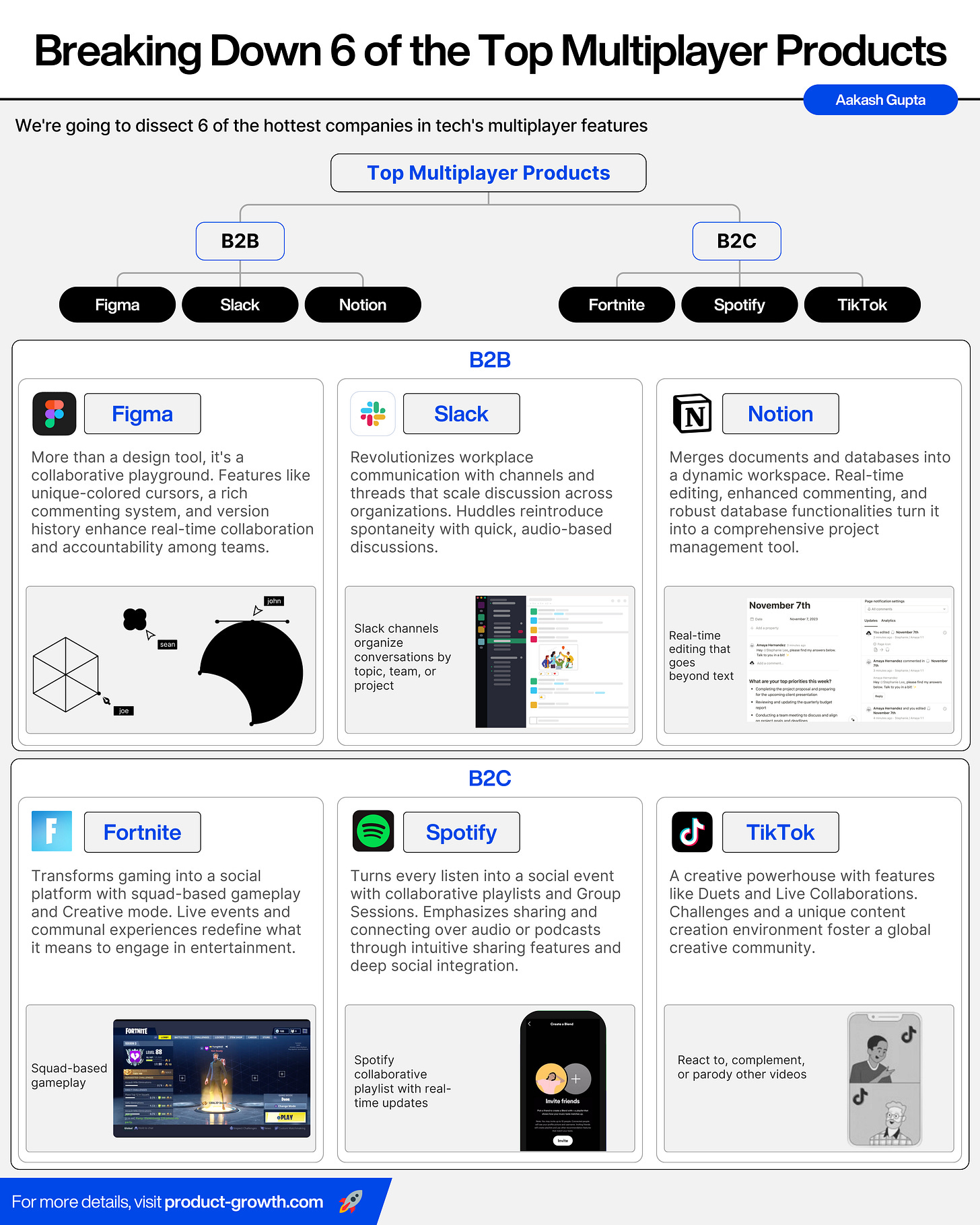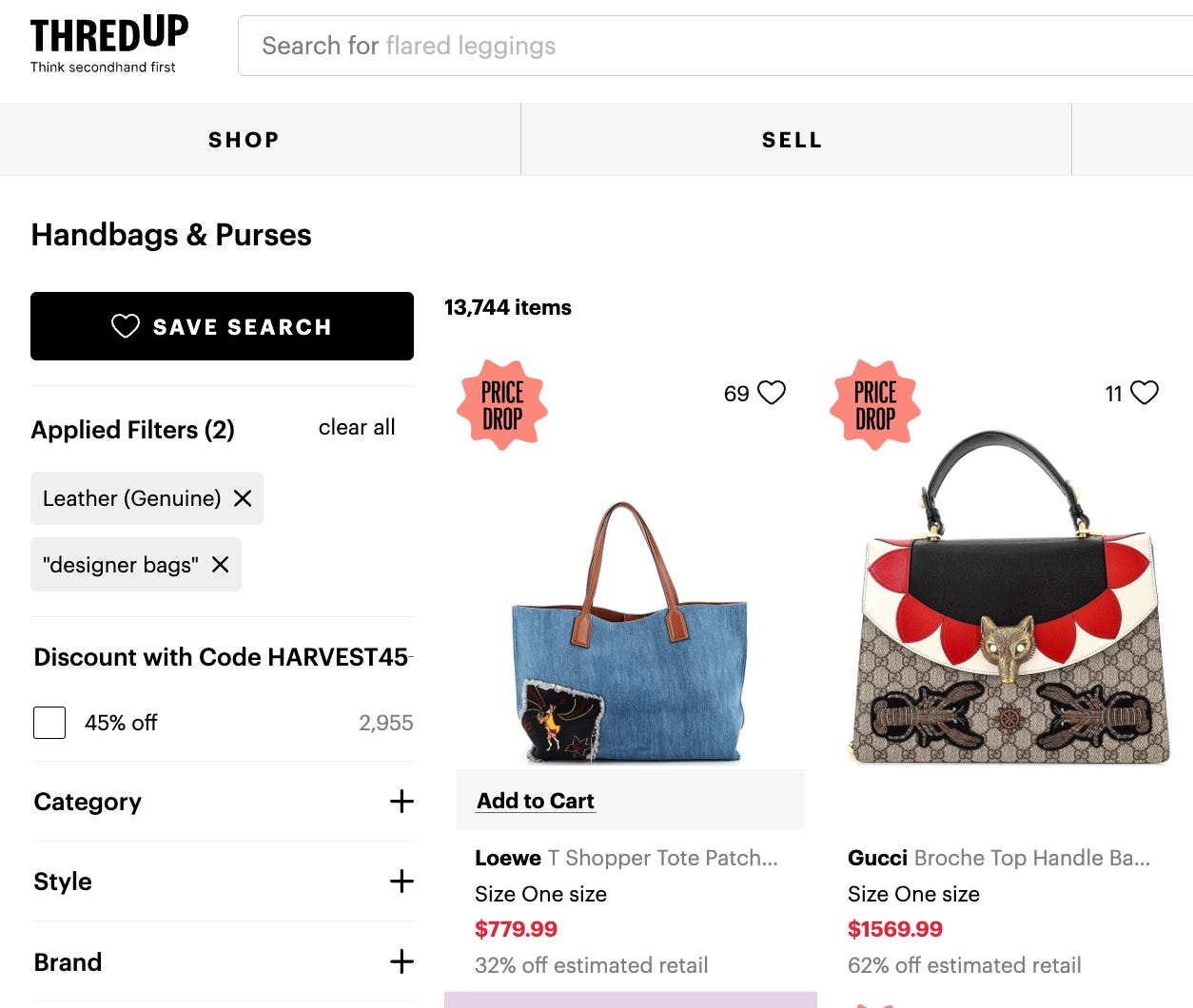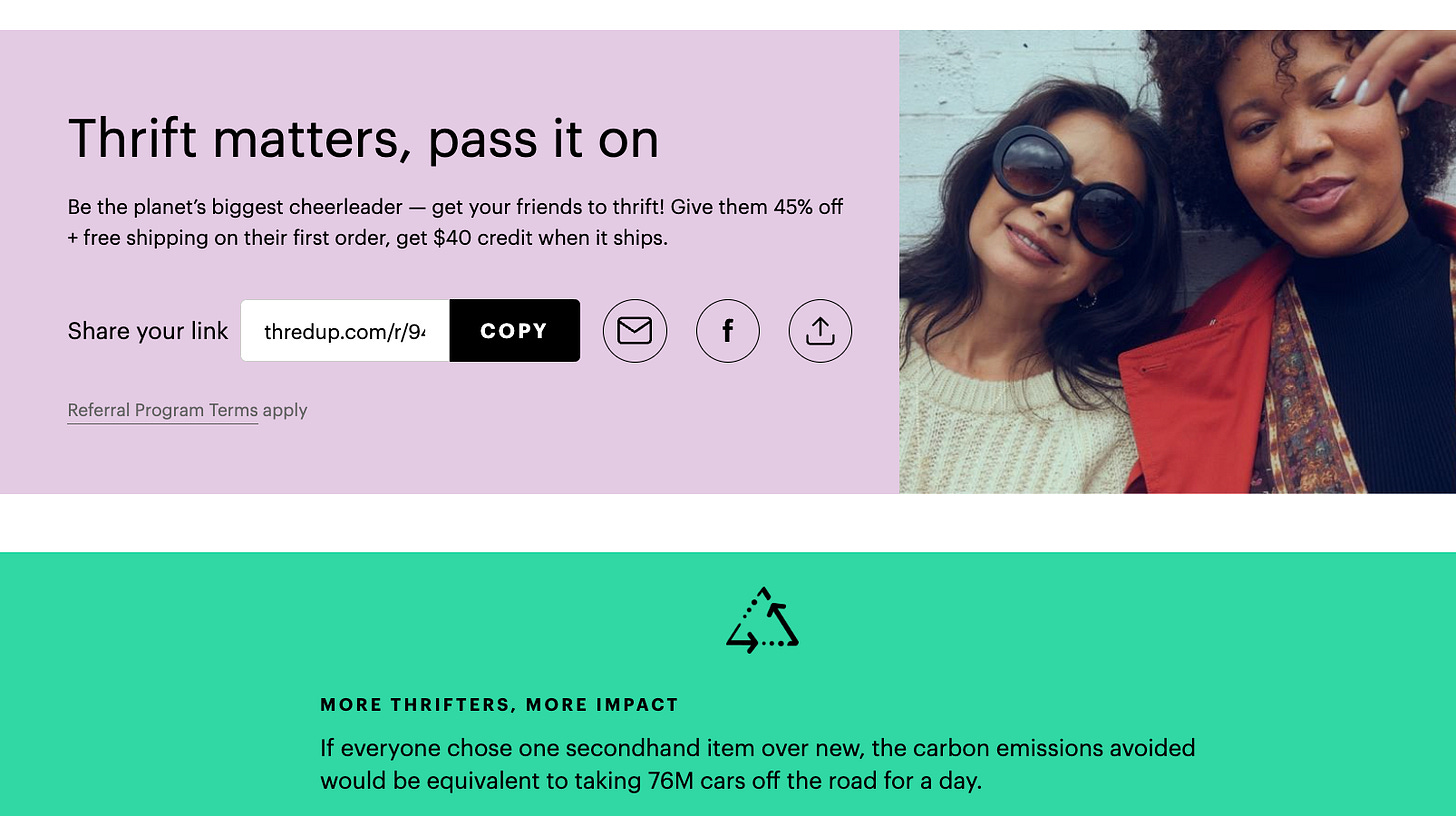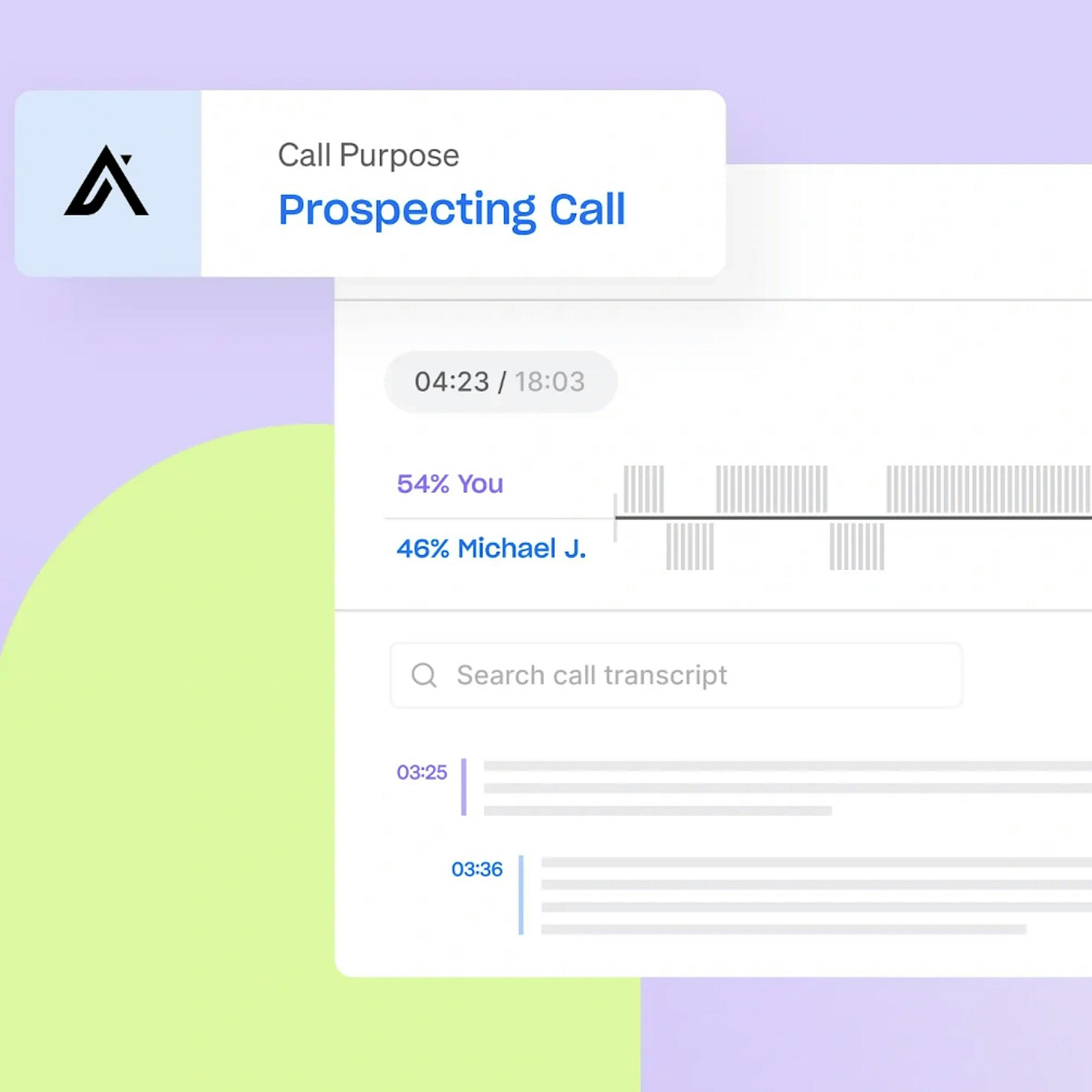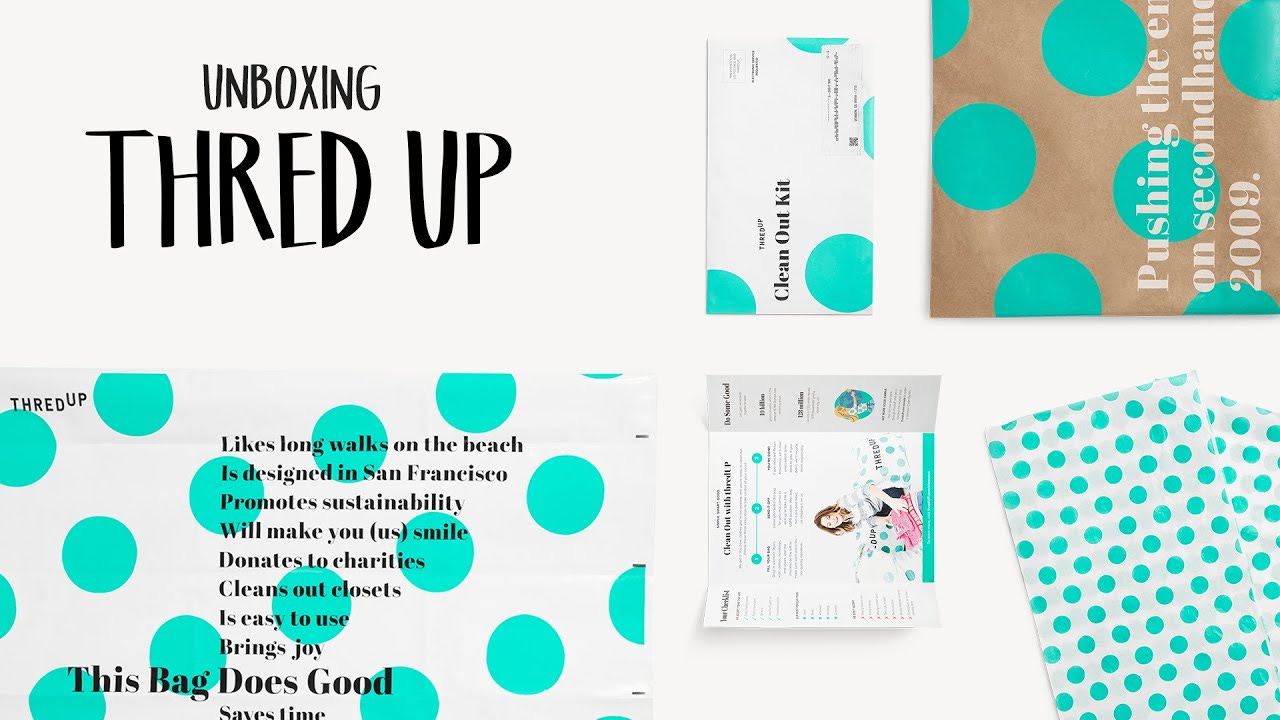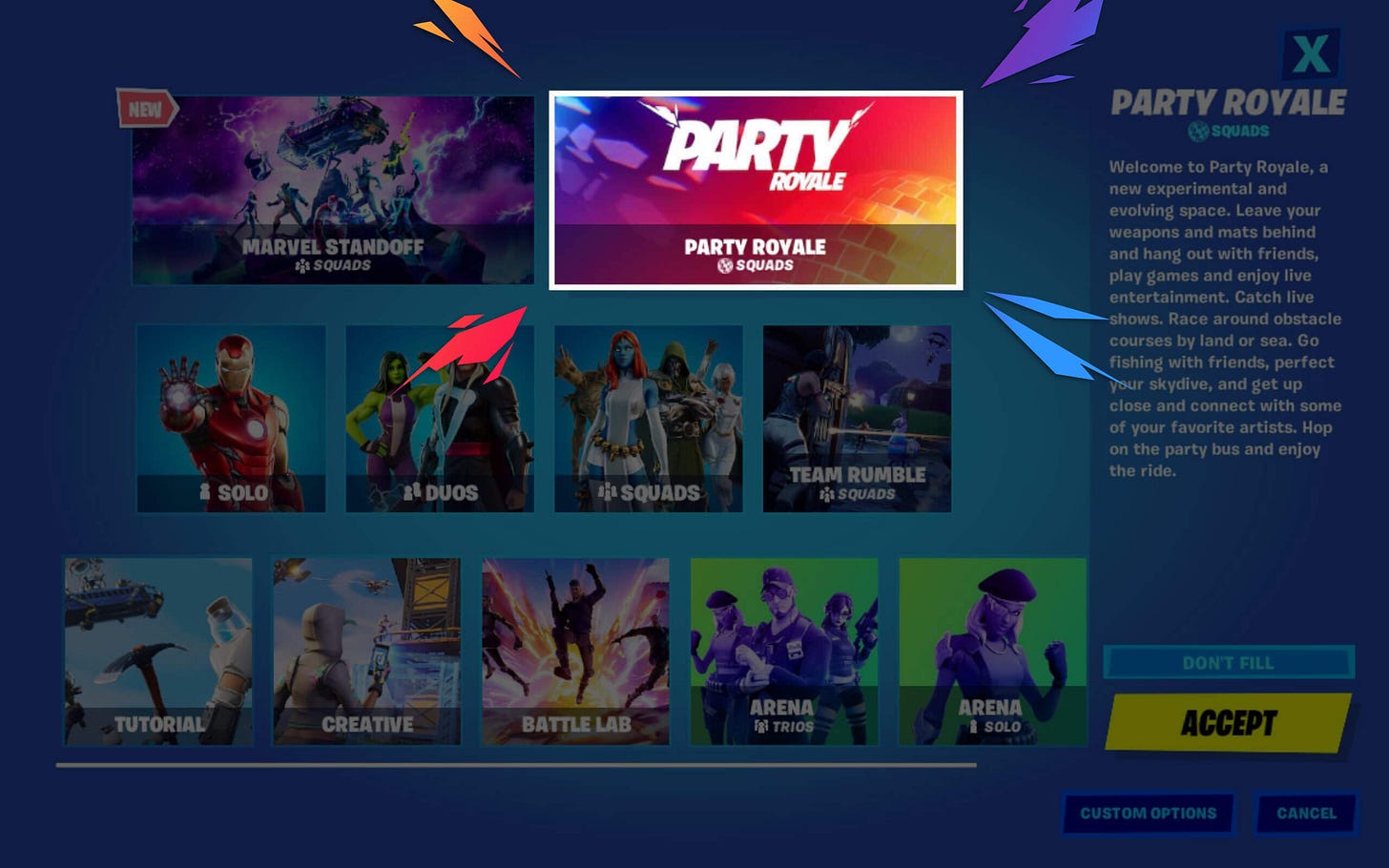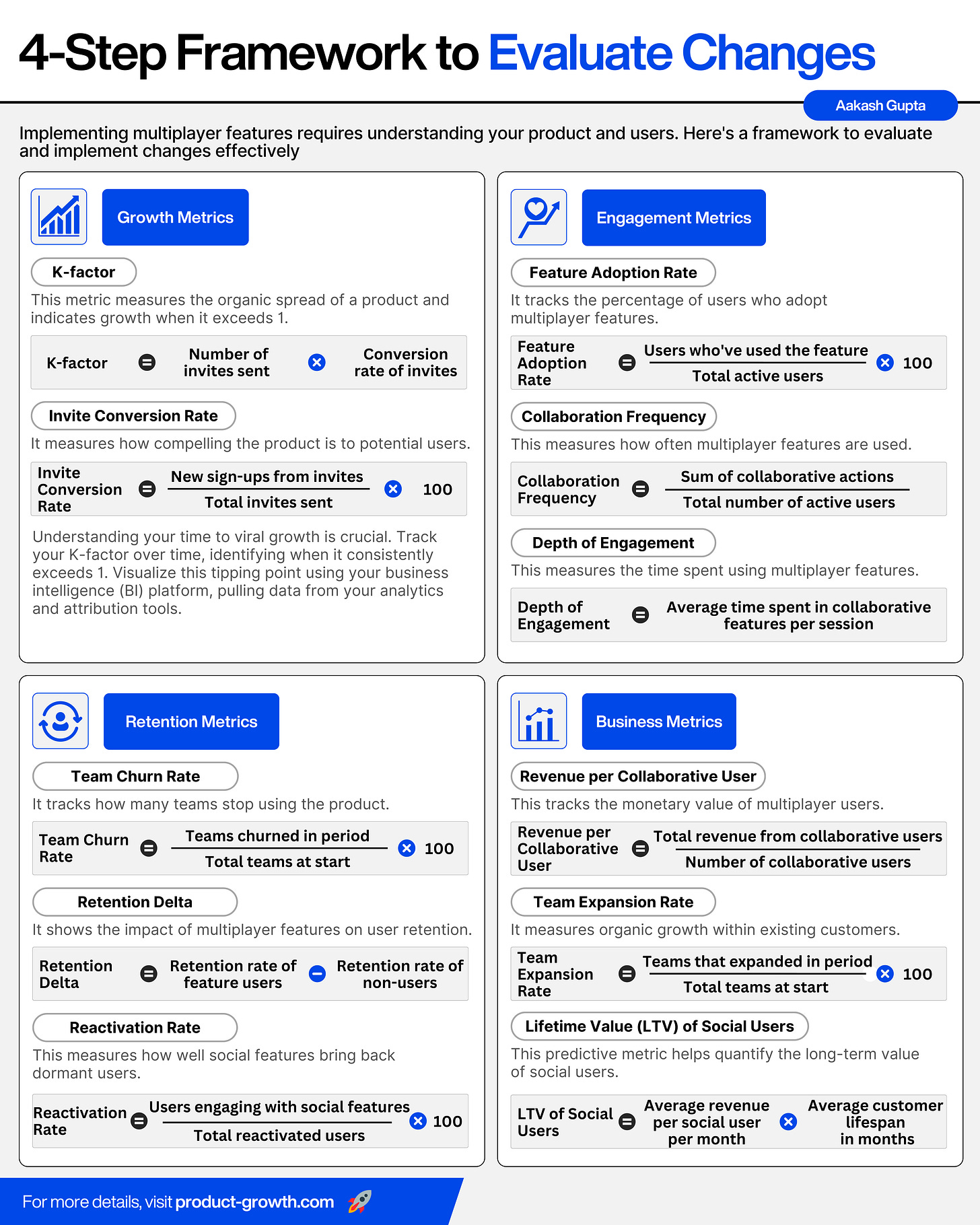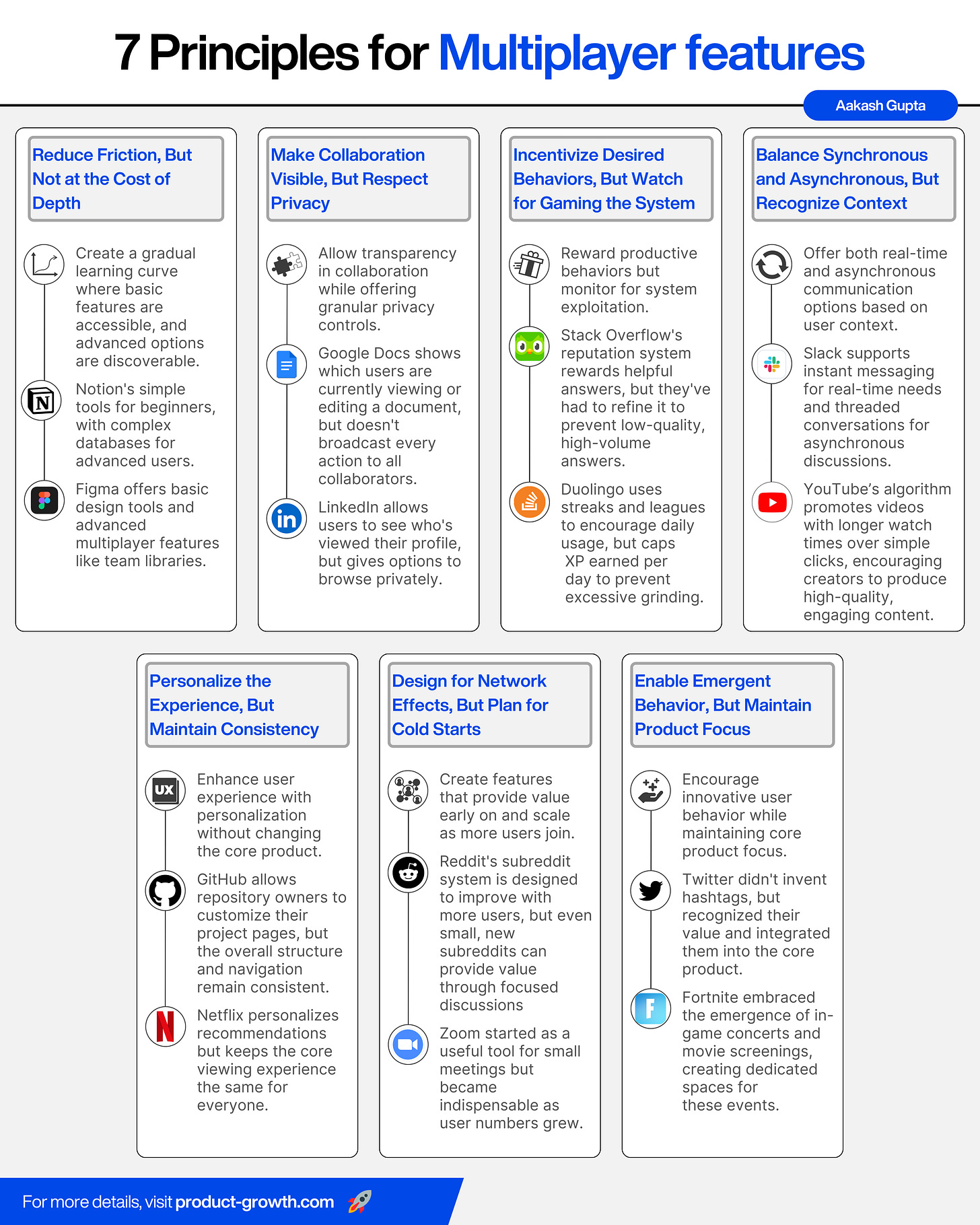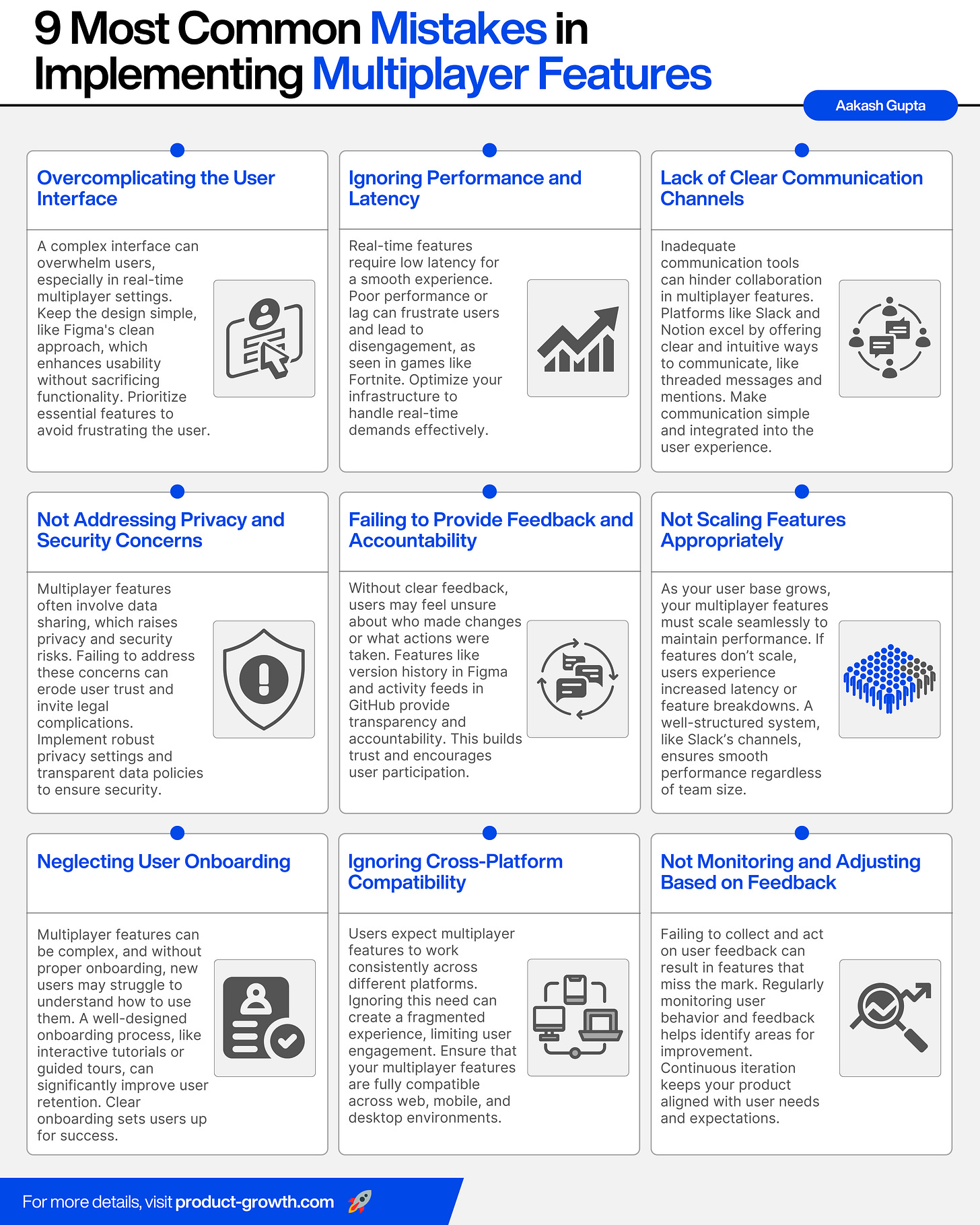The Multiplayer Lever: How to Drive Product-Led Growth via Collaboration
You can unlock exponential growth with multiplayer product features. Let's investigate the top B2B and B2C examples, and help you implement proven strategies
The multiplayer features of your product? They're the most underutilized growth lever in your toolkit.
I've had my hands in studying and building some of the biggest multiplayer products out there: Fortnite, Figma, Slack, Zoom, and Notion.
For this post, I audited 25 more multiplayer products as they stand in September 2024. Now I’m ready to share my findings.
We're going to skip the basics and dive straight into the deep end.
Today’s 11K+ word deep dive is completely free for all subscribers thanks to the post sponsor Height.app; As the only autonomous project management tool available, Height is rewriting the project management playbook for product teams.
Say goodbye to the tedious steps of project management with Height. From organizing backlogs to keeping specs up to date, Height leverages context from your team's workflows and discussions to autonomously take actions on your behalf — ensuring you stay on top of every detail without missing a beat.
Everyone on your team manages projects—tracking updates, scoping work, tagging tickets.
With Height, they can shed those everyday chores and focus on building game-changing products, without ever worrying about outdated docs or messy backlogs again.
If you're ready to stop managing projects, it's time for Height. Join the new era of product building—where projects manage themselves.
The Plan
This is the resource you'll share with your PM friend who's tackling collaboration features. It's what they'll bookmark before starting a new job.
Here's our roadmap:
Breaking down 6 of the top multiplayer products
The top experiments from my career
The encyclopedia of product levers
Framework to evaluate changes
Principles for multiplayer features
Most common mistakes
Prototype feature set
Let's dive in.
1. Breaking Down 6 of the Top Multiplayer Products
We're going to dissect 6 of the hottest companies in tech's multiplayer features:
B2B: Figma, Slack, Notion B2C: Fortnite, Spotify, TikTok
B2B Example 1 - Figma
Figma isn't just a design tool. It's a masterclass in multiplayer features for B2B SaaS.
The first thing that hits you in Figma? Those colorful cursors dancing across the canvas.
It's not just eye candy. Each cursor has a unique color and a name tag. They leave trails, showing recent movements.
This simple feature? It creates a sense of presence. It makes you want to participate.
But Figma doesn't stop there. They've taken a page from social media with their commenting system.
Comments attach to specific parts of the design.
Users can reply, creating threads. And reactions let you give quick feedback.
Suddenly, design reviews aren't just reviews. They're conversations.
And then there's the version history. It's a multiplayer feature in disguise.
It shows who changed what and when. You can name versions for easy reference. And with one click, you can jump back in time.
The result? Accountability and fearless experimentation. You can always go back if things go sideways.
Figma's not just changing how we design. It's redefining collaboration itself.
B2B Example 2 - Slack
Slack didn't just enter the workplace communication arena. It redefined it.
At the heart of Slack's multiplayer magic? Channels.
Public channels foster transparency. Private channels allow for focused discussions. Shared channels? They break down the walls between organizations.
This isn't just chat. It's a structure that scales from small teams to entire organizations.
But channels alone aren't enough. Enter: threads.
We hate them when they pile up. But they’re also magic.
Threads keep conversations organized. They reduce noise. You can follow specific threads, and even share them to other channels.
It's focused discussion without the clutter.
Finally, there's Huddles.
Slack's audio feature brings spontaneity back to remote work.
One-click audio conversations.
Screen sharing on the fly.
And they persist in the channel for easy access.
It's the digital equivalent of tapping someone on the shoulder. Quick collaboration, no meeting required.
Slack isn't just changing how we communicate at work. It's changing how we work, period.
B2B Example 3 - Notion
Notion isn't content with being just another document editor. It's blending docs with databases in a multiplayer symphony.
First up: real-time editing that goes beyond text.
Multiple users, one page, simultaneous edits. Changes sync in real-time across devices. Presence indicators show who's viewing.
It's not just a document. It's a living, breathing workspace.
But Notion's real power? It's in the comments and mentions.
Comments can land anywhere on the page. Mentions (@name) ping specific team members. Comments can be resolved, creating a workflow.
Static documents? Dead. Long live the collaboration hub.
And then there's the databases. This is where Notion kicks it up a notch.
Team members contribute to shared databases.
Views can be personalized without messing with others.
Relations between databases create powerful workflows.
It's not just data entry. It's collaborative project management on steroids.
Notion isn't just changing how we write docs. It's redefining how teams manage information.
Now, let's jump to B2C. Things get wild (but don’t tune out if you are in B2B).
B2C Example 1 - Fortnite
Fortnite isn't a game.
It's a social platform wearing battle royale clothing.
At its core? Squad-based gameplay.
Four-player squads.
Built-in voice chat.
Revive mechanics that encourage teamwork.
It's not just about winning. It's about winning together.
But Fortnite doesn't stop at battle royale. Enter: Creative mode.
Build and share custom islands.
Collaborate with up to 16 players on a single island.
Publish your creations for the community.
Fortnite is not just a game. It's a canvas for creativity.
And then there are the live events (where I spent a lot of time when I worked on it). This is where Fortnite flexes its multiplayer muscles.

Millions of players, one shared experience.
Events that require player participation.
Social media integration that amplifies the buzz.
Events like the Travis Scott concert are not just an in-game event. They are cultural moments.
Fortnite isn't just changing gaming. It's redefining entertainment itself.
B2C Example 2 - Spotify
Spotify knows music is social. And they're turning every listen into a multiplayer experience.
First up: collaborative playlists.
Multiple users, one playlist. Add, remove, reorder in real-time. Activity feed shows who added what.
It's not just a playlist. It's a party.
But Spotify doesn't stop there. Say hello to Group Sessions.
Up to 5 premium users in one session. Anyone can control playback. Works across devices and locations.
It's not just listening to music. It's experiencing it together, even when apart.
And then there's the sharing. Spotify's made it dead simple.
One-click sharing to social platforms. Custom share cards for that visual pop. Deep integration with messaging apps.
It's not just sharing a song. It's starting a conversation.
Spotify isn't just changing how we listen to music. It's changing how we connect through music.
B2C Example 3 - TikTok
TikTok isn't an app. It's a multiplayer creative explosion.
At the heart of it all? Duets.
React to, complement, or parody other videos. Original creator gets credit, driving discovery. Duets can be chained, creating viral trends.
It's not just content consumption. It's content creation on steroids.
But TikTok doesn't stop there. Enter: Challenges.
Branded hashtags create themed content streams.
Guided creation tools make participation easy.
Challenge leaderboards drive competition.
It's not just making videos. It's joining a global creative movement.
And then there's Live Collaborations.
This is where TikTok gets really interesting.
Hosts can invite guests for split-screen broadcasts. Viewers send gifts, creating a virtual economy. Live chats foster real-time interaction.
It's not just a livestream. It's appointment viewing for the digital age.
TikTok isn't just changing social media. It's redefining creativity itself.
2. The top experiments from my career
Now that we've seen how the big players do it, let's dive into the trenches. Here are the top 7 multiplayer experiments that moved the needle in my career.
Experiment 1 - Social Proof at thredUP
Back at thredUP, we were struggling with trust. People weren't sure about buying secondhand clothes online.
So we got creative. We added a little social proof to our product listing and detail pages.
Here’s likes on the listing page, for instance:
We also showed how many people were viewing an item right now and added a "Sold" card for some popular items.
The result? Conversion rate jumped 15%.
They weren’t just product pages anymore. They were live shopping events.
Experiment 2 - Referral Program at thredUP
At thredUP, we were always looking for ways to expand our customer base organically.
We implemented a robust referral program. Customers could invite friends with a personalized link. Both the referrer and the referee got money off their next purchase.
The outcome? New customer acquisition through referrals increased by 60%. Even better, these referred customers had a 25% higher lifetime value than those from other channels.
Experiment 3 - Team Challenges in Fortnite
In Fortnite, we were always looking for ways to keep squads playing together longer.
Enter: Team Challenges.
We introduced weekly challenges that required diverse skills from all squad members. Complete a challenge, and everyone in the squad got exclusive cosmetic rewards.
The result? Squad play time increased by 22%. Player retention, especially among less skilled players, saw a significant boost.
It wasn't just about individual skill anymore. It was about being a great teammate.
Experiment 4 - Collaborative Prospecting at Apollo
At Apollo, our sales users were working in silos. We needed to change that.
So we introduced "Collaborative Prospecting."
Sales reps could now collaborate in calls with team members. They could leave notes, tag each other, and even "claim" prospects to avoid duplicate outreach.
The outcome? Team productivity increased by 35%. Win rates for collaborative deals were 20% higher than solo efforts.
We didn't just build a prospecting tool. We created a collaborative sales ecosystem.
Experiment 5 - Social Unboxing at thredUP
Back at thredUP again, we noticed customers loved sharing their "unboxing" experiences on social media.
So we decided to bring that experience into the app.
We created an "Unboxing" feature. Users could record short videos opening their thredUP boxes, tag items, and share directly to their feed or social media.
The result? User-generated content increased by 80%. Repeat purchase rate for users who engaged with unboxing videos was 25% higher.
We didn't just ship clothes. We shipped shareable moments.
Experiment 6 - Party Royale in Fortnite
In Fortnite, we wanted to create a space for players to socialize beyond the battle royale.
Enter: Party Royale.
We designed a weapons-free island where players could hang out, play mini-games, and even attend live events together. It was a persistent, always-on social space within the Fortnite universe.
The outcome? Daily active users increased by 15% during non-peak hours. More surprisingly, we saw a 20% increase in voice chat usage across all game modes.
We didn't just make a new game mode. We created a digital hangout space that strengthened the Fortnite community.
Turn the page on refining your backlog. Height reviews new tickets in real-time, applying the appropriate tags based on your team’s protocol and triaging them to the right places. Improvements, feature requests, and bug fixes, Height handles tagging and organizing them all — so you can focus on building.
3. The encyclopedia of product levers
Let's dive deep into the arsenal of multiplayer product levers. These aren't mere features—they're the engines that transform good products into indispensable experiences.
Category 1 - Virality Boosters
At the heart of viral growth lies a set of carefully crafted mechanisms.
Invite Mechanics: Crafting Irresistible Offers
Dropbox's referral program stands as a testament to the power of mutual benefit. By offering extra storage to both the referrer and the referee, they turned their user base into a growth machine. This simple yet effective approach led to their legendary growth spurt.
Airbnb and Uber followed suit with their own twists. Airbnb's travel credits and Uber's ride-based referrals tapped into the same principle: make inviting friends a value proposition that's hard to ignore.
The core lesson? Design your invite system to create clear, immediate value for all parties involved.
Network Visualizations: Illuminating Hidden Connections
LinkedIn's "Degrees of Connection" feature isn't just a neat visualization—it's a powerful tool that reveals the hidden pathways within professional networks. By making these connections visible, LinkedIn encourages users to expand their networks strategically.
Facebook's "People You May Know" and Venmo's social feed take different approaches, but the underlying principle remains: show users the value and extent of their network, and they'll be motivated to grow it.
User-Generated Content Sharing: Users as Content Creators
Pinterest's "Pin It" button transformed the entire web into a content source for their platform. Instagram's "Regram" and TikTok's "Stitch" features go a step further, enabling users to build on each other's content.
These features don't just facilitate sharing—they foster creativity and engagement, turning users into active content creators and curators.
Category 2 - Engagement Amplifiers
Acquiring users is only the first step. Keeping them engaged is where true growth happens.
Real-time Collaboration: Bridging Digital Divides
Google Docs revolutionized collaborative writing by making the process visual and interactive. The sight of multiple cursors moving across a document creates a sense of shared presence that static tools can't match.
Figma applied this principle to design, while Miro brought it to brainstorming and planning. In each case, the real-time element transforms solitary tasks into collaborative experiences.
Activity Feeds: Driving Engagement Through Awareness
GitHub's activity feed turns code commits and pull requests into a dynamic showcase of project activity. LinkedIn's feed keeps professionals updated on their network's achievements and milestones. Strava's feed adds a social dimension to personal fitness.
These feeds do more than inform—they motivate action, whether it's contributing to a project, engaging with a connection, or pushing for a new personal best.
Collaborative Challenges: Gamifying Collective Achievement
Duolingo's leagues, Fitbit's step challenges, and Kahoot!'s multiplayer quizzes all leverage the power of friendly competition to drive engagement. By adding a social dimension to individual activities, these features transform solo tasks into team sports.
The key insight? Shared goals and gentle competition can turn routine activities into engaging, habit-forming experiences.
Category 3 - Retention Hooks
Acquiring and engaging users is crucial, but the real challenge lies in keeping them coming back. Here's where retention hooks come into play.
Team Dashboards: Visualizing Collective Progress
Slack's analytics dashboard does more than display data—it tells a story of team collaboration. By showcasing active channels and top collaborators, it reinforces the value of the platform to decision-makers.
Asana takes a different approach, focusing on team progress and workload management. This visibility not only helps in project management but also creates a sense of shared responsibility and achievement.
Jira's agile boards bring the team's velocity and sprint progress to the forefront. By making progress visible, these tools don't just track work—they motivate it.
The common thread? Making teamwork visible strengthens the product's position as an indispensable tool for collaboration.
Collaborative Achievements: Celebrating Shared Victories
Strava's monthly challenges transform individual workouts into shared goals. When friends join the same challenge, every run or ride contributes to a collective achievement.
Xbox's multiplayer achievements extend this concept to gaming. By tying certain achievements to group play, they incentivize players to keep coming back with their friends.
Trello's board completion celebrations might seem small, but they reinforce the satisfaction of team accomplishment. These micro-moments of shared success build positive associations with the product.
Social Learning Features: Knowledge as a Collaborative Effort
Coursera's peer-graded assignments turn learning into a two-way street. Students don't just consume content—they actively engage with their peers' work, deepening their understanding in the process.
Duolingo's clubs (now replaced with leaderboards) tapped into the power of social accountability. Learning a language alongside others turns a solitary task into a shared journey.
Codecademy's pair programming features bring real-world development practices into the learning environment. This not only prepares students for professional scenarios but also makes the learning process more engaging and interactive.
Category 4 - Monetization Multipliers
Engagement and retention are crucial, but at the end of the day, successful products need to drive revenue. Here's how multiplayer features can boost monetization.
Group Discounts: Turning Users into Sales Teams
Spotify's Family Plan is a masterclass in expanding user base through group offerings. By providing a significant discount for up to six accounts, they incentivize users to bring their entire household onto the platform.
Amazon Prime's household sharing works on a similar principle. By allowing benefits to be shared, they increase the value proposition and stickiness of their premium offering.
YouTube Premium's family plan extends this to content consumption. The ability to share ad-free viewing and premium features amplifies the perceived value of the subscription.
The key insight? Group discounts don't just attract more users—they create natural advocates for your premium offerings.
Collaborative Purchases: Harnessing the Power of the Crowd
Groupon built an entire business model around collaborative purchasing. By requiring a minimum number of buyers to activate a deal, they created a natural incentive for users to share and promote offers.
Kickstarter took this a step further, enabling backers to collectively fund projects. This not only drives financial support but also builds communities around products before they even launch.
Splitwise, while not a purchasing platform, facilitates group purchases by simplifying expense splitting. By reducing the friction in shared expenses, they make collaborative consumption easier and more appealing.
Team Upsells: Scaling Value with Group Size
Slack's pricing model is a perfect example of team-based upselling. As teams grow and require more features, the per-user value of higher tiers becomes more apparent.
Zoom's tiered pricing based on number of participants and features aligns perfectly with a team's evolving needs. As virtual meetings become more critical, the value of premium features increases.
Monday.com scales both pricing and features based on team size and needs. This flexibility allows them to cater to a wide range of team types and sizes, all while encouraging upgrades as teams grow and require more functionality.
In each of these cases, the multiplayer nature of the product isn't just a feature—it's a core part of the value proposition and monetization strategy. By aligning pricing and features with team dynamics, these products create natural upgrade paths that grow with their users.
As we've seen throughout this encyclopedia of product levers, successful multiplayer features do more than facilitate interaction—they create value, drive engagement, boost retention, and ultimately, enhance monetization. The most effective products don't treat these as separate categories, but as interconnected elements of a cohesive user experience.
In the next section, we'll explore a framework for evaluating these multiplayer features, ensuring that each implementation drives real value for both users and the business.
4. Framework to evaluate changes
Implementing multiplayer features isn't about following a cookbook recipe. It's about understanding your unique product ecosystem and user base. Here's a framework to help you evaluate and implement these changes effectively.
1. Multi-metric Analysis: The Full Picture of Product Success
Building a successful product requires monitoring a complex ecosystem of interrelated metrics. Let's break down the key areas:
Growth Metrics: The Engines of Expansion
The viral coefficient, or K-factor, is the pulse of your product's organic spread:
K-factor = Number of invites sent × Conversion rate of invites
Track this in your product analytics tool (like Amplitude or Mixpanel), combining invite data with conversion rates from your attribution system. When your K-factor exceeds 1, you've hit a growth inflection point.
Keep a close eye on your invite conversion rate:
Invite Conversion Rate = (New sign-ups from invites / Total invites sent) × 100
Use an attribution tool integrated with your analytics to monitor this. It directly measures how compelling your product is to potential new users.
Understanding your time to viral growth is crucial. Track your K-factor over time, identifying when it consistently exceeds 1. Visualize this tipping point using your business intelligence (BI) platform, pulling data from your analytics and attribution tools.
Engagement Metrics: The Heartbeat of User Activity
Measure collaboration frequency to understand feature stickiness:
Collaboration Frequency = Sum of collaborative actions / Total number of active users
Set up custom events for each collaborative action in your product analytics platform. This metric shows how deeply multiplayer features are embedded in users' workflows.
Monitor your feature adoption rate:
Feature Adoption Rate = (Users who've used the feature / Total active users) × 100
Use a product adoption tool or your main analytics platform for this. It helps you understand which multiplayer features resonate with your user base.
Don't overlook the depth of engagement:
Depth of Engagement = Average time spent in collaborative features per session
Your web analytics tool, with detailed event tracking, can capture this. It reveals not just how many users engage, but how deeply they dive into your multiplayer features.
Retention Metrics: The Staying Power of Your Product
Start with your team churn rate:
Team Churn Rate = (Teams churned in period / Total teams at start of period) × 100
Track this in your Customer Data Platform (CDP) or CRM, with custom objects for team data. In multiplayer products, team churn can be more impactful than individual user churn.
The long-term retention delta gives you a clear picture of your multiplayer features' impact:
Retention Delta = Retention rate of feature users - Retention rate of non-users
Use your BI tool to bring together user segments and retention data. This metric directly shows if your multiplayer features are moving the needle on retention.
Don't forget about reactivation rate:
Reactivation Rate = (Reactivated users engaging with social features / Total reactivated users) × 100
Your product analytics platform can track this with clear user state definitions and conversion events. It tells you how effective your social features are at bringing dormant users back.
Business Metrics: The Bottom Line
Measure revenue per collaborative user:
Revenue per Collaborative User = Total revenue from collaborative users / Number of collaborative users
Blend this in your BI system, combining product analytics with financial data. This metric helps you understand the monetary value of your multiplayer features.
Team expansion rate is crucial for products with a team-based model:
Team Expansion Rate = (Teams that expanded in period / Total teams at start of period) × 100
Your CRM or CDP can help you track this. It's a key indicator of organic growth within your existing customer base.
Finally, consider the lifetime value of social users:
LTV of Social Users = Average revenue per social user per month × Average customer lifespan in months
For this predictive metric, consider using a machine learning platform integrated with your data warehouse. It helps you quantify the long-term value of investing in multiplayer features.
By tracking these metrics in concert, you're building a comprehensive understanding of your product's performance. This holistic view allows you to make informed decisions, prioritize effectively, and drive your product toward sustainable success.
Remember, the goal isn't to optimize for any single metric, but to create a balanced, thriving product ecosystem. Regular review and analysis of these metrics will help you stay on course and continuously improve your multiplayer product.
5. Principles for multiplayer features
1. Reduce Friction, But Not at the Cost of Depth
The key is to create a "gradual learning curve" where basic multiplayer functions are immediately accessible, but more complex features are discoverable as users become more proficient.
Notion balances this by offering simple collaboration tools like comments and mentions, while also allowing for complex, interlinked databases for power users.
Figma provides a simple interface for basic design tasks, but offers powerful multiplayer features like shared components and team libraries for more advanced users.
Slack's interface is intuitive for basic messaging, but offers deep customization and integration options for power users.
2. Make Collaboration Visible, But Respect Privacy
Implement granular privacy controls that allow users to choose what they share. This respects individual preferences while still encouraging collaboration.
Google Docs shows which users are currently viewing or editing a document, but doesn't broadcast every action to all collaborators.
LinkedIn allows users to see who's viewed their profile, but gives options to browse privately.
Asana shows task assignees and due dates publicly, but keeps individual work logs private.
3. Incentivize Desired Behaviors, But Watch for Gaming the System
Stack Overflow's reputation system rewards helpful answers, but they've had to refine it to prevent low-quality, high-volume answers.
YouTube's algorithm promotes videos with high watch time, not just clicks, to encourage quality content.
Duolingo uses streaks and leagues to encourage daily usage, but caps XP earned per day to prevent excessive grinding.
Regularly audit your incentive systems. Look for unexpected behavior patterns that might indicate users are optimizing for the metric rather than the intended behavior.
4. Balance Synchronous and Asynchronous, But Recognize Context
Slack offers both real-time messaging and asynchronous threads, allowing users to choose the most appropriate method.
Microsoft Teams provides instant messaging, scheduled video calls, and asynchronous document collaboration in one platform.
Discord allows for real-time voice chat, but also includes text channels for persistent, asynchronous communication.
Insight: Provide clear context switching between sync and async modes. Users should be able to easily transition a real-time conversation into a structured, asynchronous format when needed.
5. Personalize the Experience, But Maintain Consistency
Spotify allows for personal playlists but maintains a consistent interface and feature set for all users.
Netflix personalizes recommendations but keeps the core viewing experience the same for everyone.
GitHub allows repository owners to customize their project pages, but the overall structure and navigation remain consistent.
Insight: Use personalization to enhance the core experience, not to fundamentally alter it. The base product should be recognizable and usable even with heavy personalization.
6. Design for Network Effects, But Plan for Cold Starts
Reddit's subreddit system is designed to improve with more users, but even small, new subreddits can provide value through focused discussions.
Zoom became invaluable as more people joined, but it was useful even for small team calls from the start.
Clubhouse leveraged celebrity users to kickstart rooms while the user base was still small.
Insight: Build features that provide immediate value to early adopters, then scale up the benefits as the network grows. Consider "seeding" the network with high-value content or users to overcome initial adoption hurdles.
7. Enable Emergent Behavior, But Maintain Product Focus
Twitter didn't invent hashtags, but recognized their value and integrated them into the core product.
Fortnite embraced the emergence of in-game concerts and movie screenings, creating dedicated spaces for these events.
Twitch originally focused on gaming streams, but expanded to support the emerging "Just Chatting" category as it grew in popularity.
Insight: Monitor how users are creatively using your product. When you spot emerging behaviors that align with your product vision, consider formalizing them into features. However, be cautious about chasing every trend – maintain a clear product focus.
Enjoy this deep dive, be sure to share with your friends and consider going paid: this is what the full experience is like when we don’t have sponsors.
6. Most Common Mistakes in Implementing Multiplayer Features
When designing and implementing multiplayer features, it is crucial to avoid common pitfalls that can undermine the user experience, engagement, and ultimately, the success of your product. Here are some of the most common mistakes to watch out for:
Mistake 1 - Overcomplicating the User Interface
One of the most critical mistakes is overcomplicating the user interface with too many features or complex interactions.
This can lead to user confusion and frustration, especially in real-time collaboration tools.
For example, Figma's success lies in its simple yet effective use of colorful cursors and name tags, which create a sense of presence without overwhelming the user
Mistake 2 - Ignoring Performance and Latency
Multiplayer features often require real-time updates and low latency to maintain a seamless user experience.
Ignoring performance issues can lead to delays, lag, or even crashes, which can be particularly problematic in applications like Fortnite or Google Docs.
Ensuring that your infrastructure can handle the load and optimizing for performance is essential
Mistake 3 - Lack of Clear Communication Channels
Effective communication is the backbone of any successful multiplayer feature.
Failing to provide clear and intuitive communication channels, such as Slack's threads or Notion's comments and mentions, can lead to misunderstandings and decreased collaboration.
It is important to design communication features that are easy to use and integrate well with the rest of the product
Mistake 4 - Not Addressing Privacy and Security Concerns
Multiplayer features often involve sharing data and interactions between users, which raises significant privacy and security concerns.
Neglecting these issues can lead to user distrust and potential legal problems.
Ensuring that user data is protected and that privacy settings are clear and customizable is vital
Mistake 5 - Failing to Provide Feedback and Accountability
Features like version history in Figma or activity feeds in GitHub are crucial for providing feedback and accountability.
Without these, users may feel uncertain about changes or lack motivation to contribute.
Implementing mechanisms that show who made changes and when can foster a sense of responsibility and trust among team members
Mistake 6 - Not Scaling Features Appropriately
As your user base grows, your multiplayer features need to scale accordingly. Failing to do so can result in performance issues, increased latency, or even feature failures. For instance, Slack's channel system is designed to scale from small teams to entire organizations, ensuring that the product remains effective regardless of the team size
Mistake 7 - Neglecting User Onboarding
Proper onboarding is essential for new users to understand and effectively use multiplayer features. Neglecting this can lead to a high drop-off rate as users may find the features too complex or overwhelming. A well-designed onboarding process, such as interactive tutorials or guided tours, can significantly improve user adoption and retention
Mistake 8 - Ignoring Cross-Platform Compatibility
In today's diverse technological landscape, ensuring that your multiplayer features work seamlessly across different platforms (web, mobile, desktop) is crucial.
Ignoring cross-platform compatibility can limit your user base and create a fragmented user experience.
For example, Spotify's Group Sessions work across devices and locations, enhancing the overall user experience
Mistake 9 - Not Monitoring and Adjusting Based on Feedback
Finally, it is essential to continuously monitor user feedback and adjust your multiplayer features accordingly.
Failing to do so can lead to features that do not meet user needs or expectations.
Regularly collecting feedback through surveys, user testing, or analytics can help identify areas for improvement and ensure that your product remains relevant and engaging.
By being aware of these common mistakes, you can design and implement multiplayer features that are not only effective but also enhance the overall user experience, driving product-led acquisition and expansion.
7. Multiplayer Prototype
Before we go, let's leave you with a summary of what we've learned today - your multiplayer feature prototype:
Frictionless Invites: One-click, no-signup-required invitations
Real-time Presence: Cursors, avatars, and activity indicators
Async Collaboration: Robust commenting and suggestion system
Personalized Activity Feed: AI-curated updates on collaborative activities
Gamified Teamwork: Points and achievements for collaborative actions
Flexible Permissions: Simple, intuitive access controls with advanced options
Cross-platform Sync: Seamless transition between devices and online/offline states
Collaborative Onboarding: Guided, interactive tour of multiplayer features
Scalable Architecture: Built to handle exponential user growth
Remember: This is a starting point.
Always prioritize solving your specific users' collaboration pain points over implementing features for the sake of it.
Additional Resources
Want to dive deeper?
Here are some resources I've found invaluable in researching this piece over the past few months:
Hooked: How to Build Habit-Forming Products by Nir Eyal - Great for understanding the psychology behind engaging products
Team Topologies by Matthew Skelton and Manuel Pais - Invaluable for thinking about how to structure teams for effective collaboration
The a16z Podcast episodes on network effects - A goldmine of insights on building sticky, viral products
Designing Data-Intensive Applications by Martin Kleppmann - Essential reading for building scalable, real-time collaborative systems
A final shout-out to Height.app, the sponsor that made today’s deep dive totally free for all.
Product teams use Height to automate the manual legwork that gets in the way of building their products. Say goodbye to triaging bugs, updating product docs, refining backlogs, and more, with Height.
Email productgrowthppp at gmail dot com to advertise in the newsletter.
Some of the experiments in this article I was only involved from afar at the company — all credit to the PMs who drove the specific features in each case.
Up Next
I hope you enjoyed the latest podcast on How to Know Your Users and the latest newsletter on Estimation Questions.
In the podcast, our upcoming guests are Shobhit Chugh and Thibault Louis-Lucas. Then in the newsletter, I am putting the finishing touches on the following pieces:
Job Hunting Sucks: Here’s What One Seeker Learned
How to Win the Enterprise: The Ultimate Guide
How Statsig Grows
Stay tuned, and remember: in the world of product, the best teams win. Make sure your product helps create those winning teams via multiplayer experiences.
Cheers,
Aakash
P.S. Did you know you can earn free months of Product Growth by recommending your friends?


